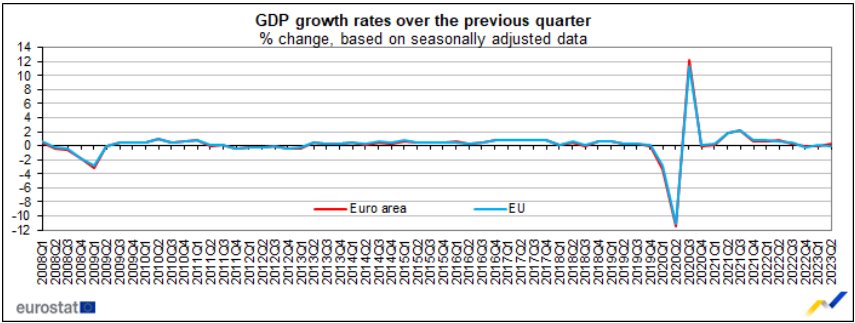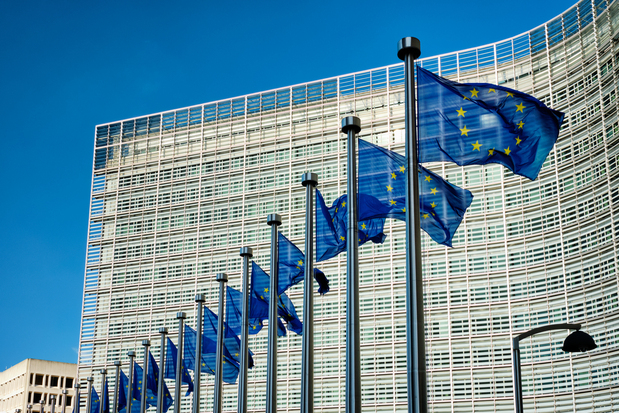The eurozone has escaped a mild recession in light of preliminary flash estimates for the second quarter of 2023 indicating that the monetary union’s GDP grew by 0.3 per cent.
The euro area had entered a shallow recession in the first quarter of 2023 after reporting two consecutive quarters with negative GDP growth.

These figures come a day ahead of when the European Central Bank’s (ECB) new interest rates come into force, which will rise to their highest level in over 20 years as it continues its battle with a high level of inflation.
Relative to the same quarter in 2022, the euro area’s GDP grew by 0.6 per cent.
During the first quarter of 2023, Malta was one of the euro area countries which registered negative GDP growth of 0.5 per cent. However, Malta’s figures were absent from the latest release by Eurostat.
Ireland and Lithuania registered the strongest growth during the second quarter of 2023 compared to the previous quarter, registering 3.3 per cent and 2.8 per cent respectively.
The remaining euro area countries registered either nil or growth below one per cent, with the exceptions being Italy, Latvia, Austria which saw their economies contract.
With rising interest rates putting the squeeze on consumer demand, euro area inflation reduced to 5.3 per cent in July, however, the ECB forecasted that it would still be above two per cent by the end of 2023.
According to a statement issued by the ECB, the near-term economic outlook for the euro area deteriorated owing largely to weaker domestic demand.
“High inflation and tighter financing conditions are dampening spending. This is weighing especially on manufacturing output, which is also being held down by weak external demand.”
However, it expected that falling inflation and higher incomes, bolstered by a resilient labour market were expected to support economic recovery.
MFSA flags ‘misalignment’ between objectives and public expectations of green loans
Green investment is nonetheless expected to balloon over the coming years
Super rare Ferrari Daytona SP3 spotted cruising along Malta’s roads
The car is currently being traded for a whopping €4 million
Mandatory skills pass for Maltese and EU nationals deferred for a year
The skills pass remains obligatory for third country nationals






